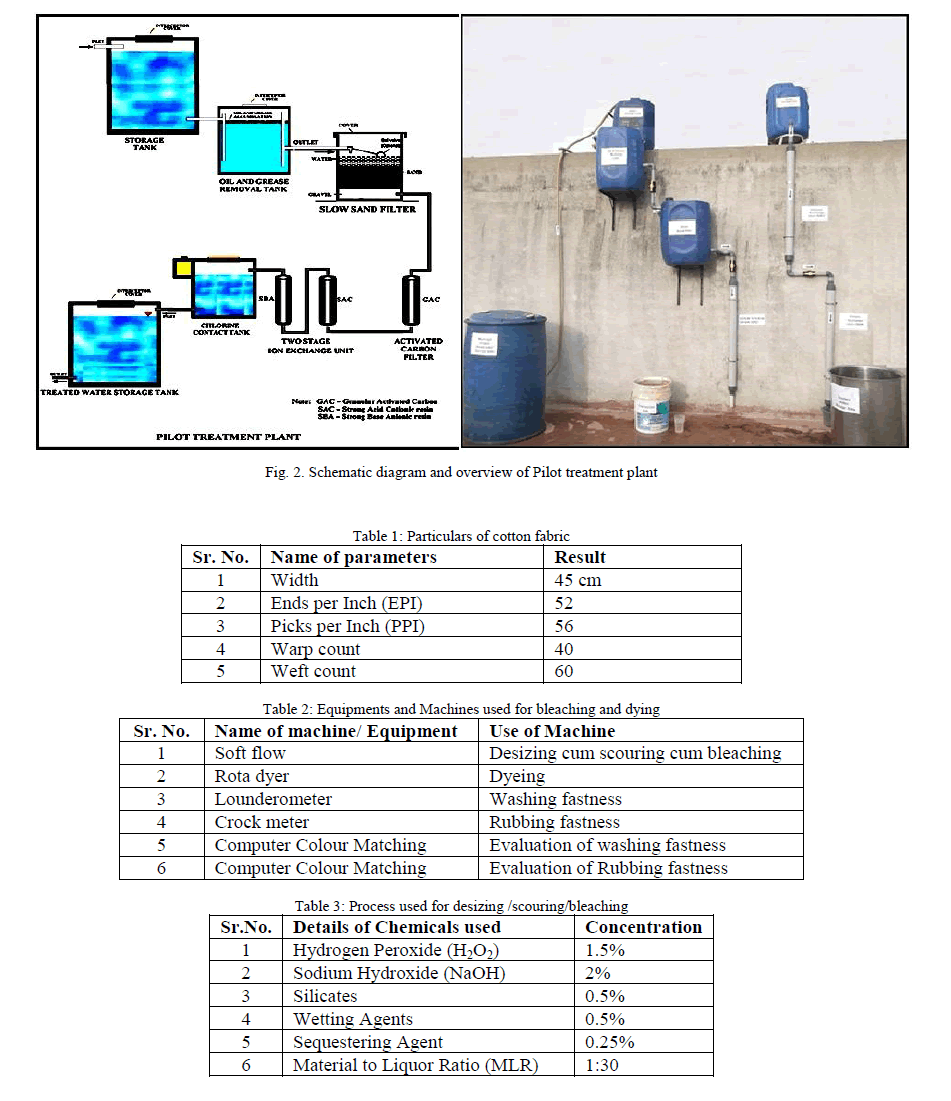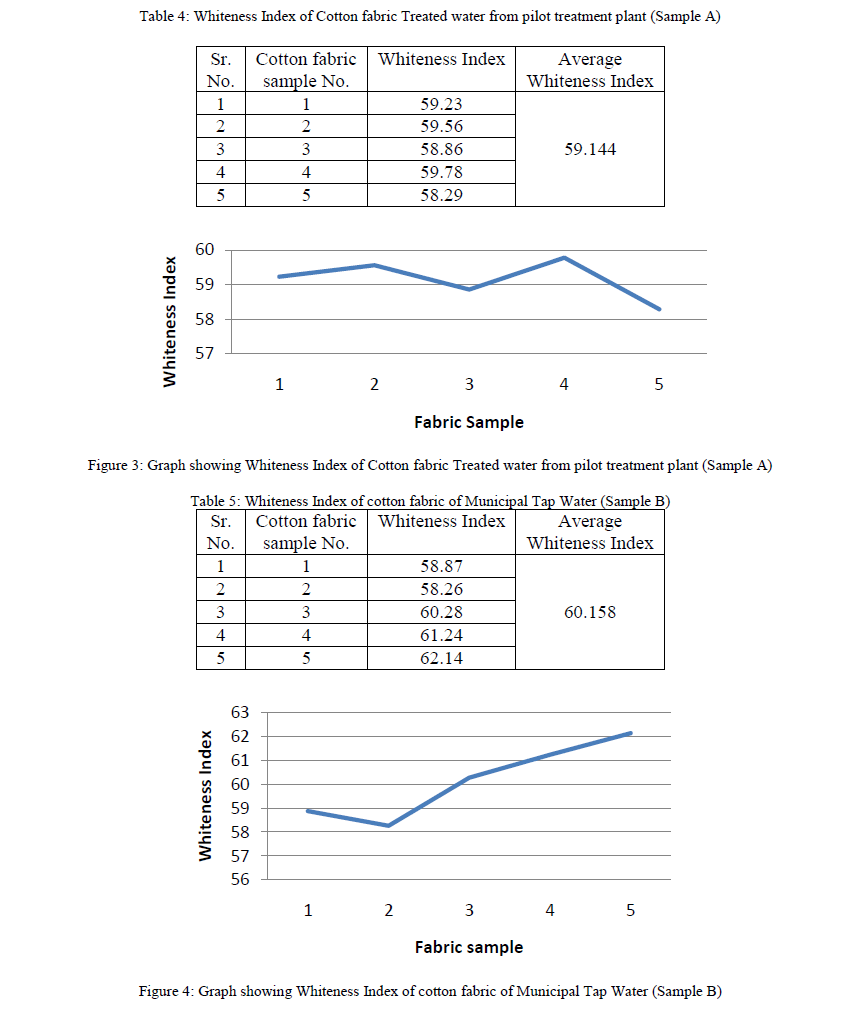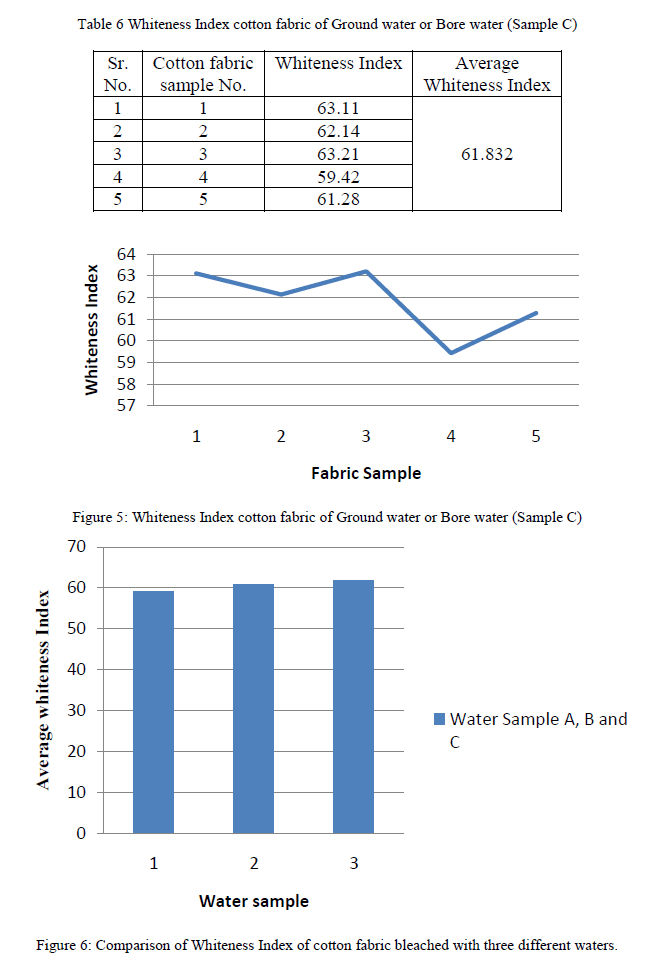ISSN ONLINE(2319-8753)PRINT(2347-6710)
ISSN ONLINE(2319-8753)PRINT(2347-6710)
Dr. (Capt.) N.P. Sonaje1 and Prof. M.B. Chougule2
|
| Related article at Pubmed, Scholar Google |
Visit for more related articles at International Journal of Innovative Research in Science, Engineering and Technology
An increase of industrialization reduces freshwater sources because of the large amounts of water required by manufacturing facilities and pollutants from manufacturing processes pollute the remaining freshwater sources. The large quantity of water usage and pollution relates to the manufacturing of textiles. Wet processes in the textile industries require water of very good quality concerning mainly content of dyes, detergents, and suspended solids. Therefore, a purification treatment to recycle water must have much better performances than for simple discharge according to the limits imposed by legislation. Recycle of sewage and industrial effluent is an effective, dependable and economical way of solving the problem of perennial water shortages. Water recycle helps conserve vast volumes of water, while protecting the environment by reducing pollution. It reduces dependence on unreliable/insufficient water supplies while drastically cutting down on expenses on municipal/ raw/tanker water. This paper focuses on use of recycled wastewater in textile wet processing and comparing whiteness index of cotton fabric with fabric processed with ground water and Municipal tap water.
Keywords |
| Whiteness Index, Bleaching, Recycled wastewater, Pilot treatment plant. |
INTRODUCTION |
| The evaluation of the whiteness of a product is dependent upon the materials and the application in which it is used. Natural materials, for instance cotton or wool, tend to yield some yellowish tint, so the industry will make modifications to the materials to compensate for this effect. A yellowish tint in a product is most often seen as a quality flaw, e.g., yellowing due to aging or dirt, and businesses will attempt to make the appearance of their products whiter. Bleaching is a process that chemically removes colors from materials and results in a more uniform spectral reflectance. It is the process of removing colored impurities from the griege fabric as efficiently as possible, with minimum or no damage to the fiber and leaving in a perfect white state A study was conducted to find whiteness Index of cotton fabric bleached with Treated water from pilot treatment plant, Municipal Tap Water and Ground water or Bore water. |
II. WATER USAGE IN TEXTILE INDUSTRY AND IMPORTANCE OF WATER RECYCLING |
| There are many sources of water, the most common being: Surface sources, such as rivers, Deep wells and shallow wells, Municipal or public water systems, Reclaimed waste streams [5]. The textile industry in India has been pioneer industry. Indian textile industry is the 2nd largest in the world. Overall India is world’s 8th largest economy and among the 10 industrialized countries [4]. If global break up of fresh water is seen then from 100 % of freshwater, 20 % is being used by the industries which are responsible for large production of effluents [2]. The rapid growth in population and particularly in urbanization has resulted in sharp increase in generation of these two wastes. In India alone 19000 million liters of sewage is generated every day of which more than 25% is attributed to class I cities. Out of this quantity of sewage 13000 million liters per day (MLD) is collected out of which at the most half is treated to some extent. In terms of nutrients and water availability, economic value of this quantity of domestic sewage has been to IJIRSET www.ijirset.com 3947 estimated as Rs. One crore per day. As regards industrial wastewater generation, the same is estimated 10000 MLD, 40% is from small scale industries [3]. Wastewater reclamation and reuse is one element of water resources development and management which provides an innovative and alternative option for agriculture, municipalities and industries [1]. The availability of alternative water sources such as reclaimed municipal waste water or recycled process water can foster more efficient water use practices that translate in to significant cost savings in industries [6]. |
III. MATERIALS AND EXPERIMENTAL METHODS |
| Pilot treatment plant was prepared and treatment was given to treated municipal wastewater. Units in recycling plant comprises Municipal treated water storage tank, Oil & Grease removal unit, Slow Sand filter (SSF), Granular Activated Carbon filter (GAC), Chlorination unit Cationic Exchange Resin (SAC) and Anionic Exchange Resin (SBA). |
Details of Pilot treatment plant: |
| A. Municipal treated water storage tank: To store the treated wastewater for further treatments. Also acts as a sedimentation tank. |
| B. Oil & Grease removal unit: Oil & Grease can be removed with this unit. |
| C. Slow Sand filter (SSF): Slow sand filter is provided with various layers of sand of different particle size. |
| D. Granular Activated Carbon filter (GAC): Through this the color and odor from the wastewater is removed. |
| E. Chlorination unit: This is carried out to disinfect the sewage. For this sodium hypochlorite solution (22 gpl) with various dosages was used. |
| F. Cationic Exchange Resin (SAC): Here cations like Na+ Mg++, Ca++ etc was exchanged with H+ ions. The cationic exchange resin used was strong acid type. It is a premium quality strong acid cation exchange resin containing nuclear sulphonic acid groups having high exchange capacity, combined with excellent physical and chemical stability and operating characteristics. It is ideally suited for use in a wide range of pH and temperature conditions. It is supplied in hydrogen form for two stages and mixed bed demineralization and in sodium form for softening. It is also used for dealkalization and chemical processing. |
| G. Anionic Exchange Resin (SBA): Here anions like S04--, CO3--, Cl- etc was exchanged with OH- ions. The anionic exchange rein used was strong base type. It is a strong base anion exchange resin based on polystyrene matrix, containing quaternary Ammonium group. It has excellent chemical and operating characteristics along with excellent physical properties due to its crack-free nature. It has a good operating capacity for weak acids like silicic and carbonic along with strong mineral acids, when used in water treatment along with strong acid cation exchange resin. It is ideally suited for use in a wide range of pH and temperatures. It is supplied as moist spherical bead in the chloride form with a particle size distribution to provide good kinetics and minimum pressure drop. |
 |
IV. EXPERIMENTAL SETUP |
 |
| Testing and analysis of cotton fabric after bleached with (1) Treated water from pilot treatment plant (Sample A) (2) Municipal Tap Water. (Sample B) (3) Ground water or Bore water (Sample C) Whiteness Index was calculated by Computer Colour Matching (C.C.M.) method. This practice provides numbers that correlate with visual ratings of yellowness or whiteness of white and near white or colorless object-color specimens, viewed in daylight by an observer with normal color vision. Following tables and graphs show performance cotton fabric bleached with three different types of water. |
 |
 |
V. CONCLUSION |
| From experimental study it is revealed that Average whiteness index of cotton fabric bleached with Treated water from pilot treatment plant (Sample A) is 59.144 and that of bleached with Municipal Tap Water. (Sample B) is 60.158 and Ground water or Bore water (Sample C) 61.832. This shows that recycled water gives comparatively good performance in bleaching of cotton fabric by removing impurities. This is because hardness value of recycled wastewater is less than other two categories. It can be concluded that recycled wastewater is suitable for bleaching of cotton fabric in textile wet processing and with satisfactory whiteness Index. |
ACKNOWLEDGEMENT |
| Authors are thankful to Ph.D. Research Centre, Walchand Institute of Technology, Solapur, Maharashtra (India) for constant support for this research paper. |
References |
|